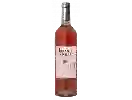
Winery Michel GassierMerinos Costières-de-Nîmes
This wine generally goes well with beef, lamb or mature and hard cheese.
Food and wine pairings with Merinos Costières-de-Nîmes
Pairings that work perfectly with Merinos Costières-de-Nîmes
Original food and wine pairings with Merinos Costières-de-Nîmes
The Merinos Costières-de-Nîmes of Winery Michel Gassier matches generally quite well with dishes of beef, lamb or spicy food such as recipes of pork tongue with bacon and onions, leg of lamb in a herb crust with preserved vegetables or saka-saka.
Details and technical informations about Winery Michel Gassier's Merinos Costières-de-Nîmes.
Discover the grape variety: Loureiro
Most certainly Portuguese. Loureiro is part of the grape varieties of many Spanish and Portuguese appellations, including the famous Vinho Verde. It would be a close relative of the albarino and the sousão.
Last vintages of this wine
The best vintages of Merinos Costières-de-Nîmes from Winery Michel Gassier are 2012
Informations about the Winery Michel Gassier
The Winery Michel Gassier is one of of the world's great estates. It offers 25 wines for sale in the of Costières-de-Nîmes to come and discover on site or to buy online.
The wine region of Costières-de-Nîmes
The wine region of Costières-de-Nîmes is located in the region of Rhône méridional of Rhone Valley of France. Wineries and vineyards like the Domaine Scamandre or the Château d'Or et de Gueules produce mainly wines red, pink and white. The most planted grape varieties in the region of Costières-de-Nîmes are Mourvèdre, Roussanne and Viognier, they are then used in wines in blends or as a single variety. On the nose of Costières-de-Nîmes often reveals types of flavors of non oak, thyme or raisin and sometimes also flavors of clove, cocoa or coffee.
The wine region of Rhone Valley
The Rhone Valley is a key wine-producing region in Southeastern France. It follows the North-south course of the Rhône for nearly 240 km, from Lyon to the Rhône delta (Bouches-du-Rhône), near the Mediterranean coast. The Length of the valley means that Rhône wines are the product of a wide variety of soil types and mesoclimates. The viticultural areas of the region cover such a distance that there is a widely accepted division between its northern and southern parts.
The word of the wine: Smoked white
See sauvignon.













